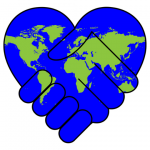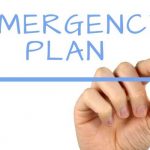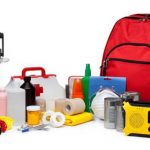Survival Food & Water is Essential During a Disaster
When you are remaining in your home, staying in a shelter, or even dealing with the possibility of being stuck out on the road, having food and water is your top priority in any disaster situation.
You can make it a surprisingly long time without food, power, and all sorts of other stuff. However, your body cannot make it very long without a reliable source of drinking water.
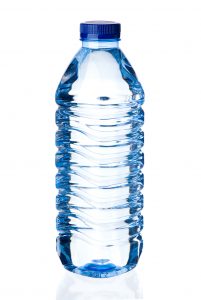 We’ve become so reliant on running water that it’s easy to forget that we need an emergency supply of stored water for a few days whenever something happens. Buy some bottles or gallons at the store, or fill up milk jugs and soda bottles to ensure you have enough clean water to safely drink. Store at least a gallon of drinking water per person per day for 3-5 days, depending on the situation you are preparing for. For a family of four, that would be 12-20 gallons of water. If you have pets, remember that they will need water, too.
We’ve become so reliant on running water that it’s easy to forget that we need an emergency supply of stored water for a few days whenever something happens. Buy some bottles or gallons at the store, or fill up milk jugs and soda bottles to ensure you have enough clean water to safely drink. Store at least a gallon of drinking water per person per day for 3-5 days, depending on the situation you are preparing for. For a family of four, that would be 12-20 gallons of water. If you have pets, remember that they will need water, too.
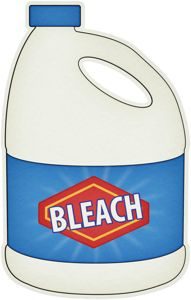 If you know ahead of time about an impending disaster, you can fill a bathtub, which can serve as an extra source of water. You can treat impurified water by using 16 drops of regular household liquid bleach per gallon of water. Do NOT use scented, color-safe or bleaches with added cleaners.
If you know ahead of time about an impending disaster, you can fill a bathtub, which can serve as an extra source of water. You can treat impurified water by using 16 drops of regular household liquid bleach per gallon of water. Do NOT use scented, color-safe or bleaches with added cleaners.
While human beings can go a surprisingly long period of time without food, involuntary fasting isn’t particularly pleasant. Keep a few ready-to-eat non-perishable foods in your pantry at all times including peanut butter, crackers, and canned foods that you can eat without heating. Canned tuna or chicken make for a great emergency protein source. Don’t forget about things like granola bars, protein bars, nuts or beef jerky that you can eat right from the package. Bread is another good option, along with your favorite non-perishable sandwich toppings.
Emergency food storage doesn’t have to be complicated or expensive. It helps to stick with items that you eat on a regular basis, so you can rotate through and use up your food storage without it going bad. Just be sure you replace it when you use it up. Having at least a week’s worth of food and water stored up is a great idea during a natural disaster. Keep in mind that you not only have to ride out the disaster itself, but that it may also take extra time before help and supplies can make it to you.
Don’t forget to include eating utensils and a manual can opener in your disaster kit.
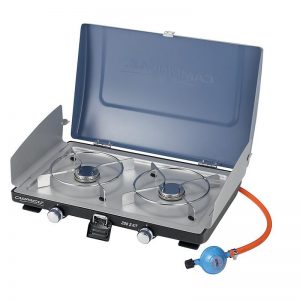 If you have a camping stove or an outdoor grill, you may also be able to heat and cook some foods. If your power has gone out, use up your perishable food in the refrigerator first, before they go bad. Instant oatmeal, coffee, hot chocolate mix, soups, and even instant rice are great options if you have the ability to heat water when the power goes out. If you have time to prepare, be sure your propane tank is full if you have a gas grill, or you have plenty of wood, charcoal briquettes or smokeless solid fuel cubes for creating a cooking flame or heat. No matter how cold or wet it is outside, never cook with these items indoors, as they generate deadly carbon monoxide gas.
If you have a camping stove or an outdoor grill, you may also be able to heat and cook some foods. If your power has gone out, use up your perishable food in the refrigerator first, before they go bad. Instant oatmeal, coffee, hot chocolate mix, soups, and even instant rice are great options if you have the ability to heat water when the power goes out. If you have time to prepare, be sure your propane tank is full if you have a gas grill, or you have plenty of wood, charcoal briquettes or smokeless solid fuel cubes for creating a cooking flame or heat. No matter how cold or wet it is outside, never cook with these items indoors, as they generate deadly carbon monoxide gas.
Include some favorite treats like chocolate, chips, pretzels, cookies, or other comfort foods. These treats can make getting through those tough disaster days a little more bearable.
Start with a list of things that you know your family will eat that will be satisfying and healthy, including things you’ll use up even when there is no disaster. If you don’t usually eat canned soups, fruits and veggies, you can rotate those out to a food bank when they are close to their expiration date–so they don’t go to waste—and replenish them for your emergency supply.
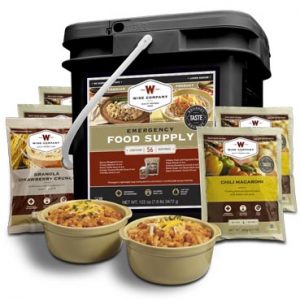 Talk to your family about your survival food supply and let them have input into what you store in your emergency kit. It will give them a sense of control and responsibility and ensure that everyone is as happy as possible with the meals available when things get serious.
Talk to your family about your survival food supply and let them have input into what you store in your emergency kit. It will give them a sense of control and responsibility and ensure that everyone is as happy as possible with the meals available when things get serious.
Our family has stored some emergency freeze dried food that we can just add water to and it is ready to eat. The shelf-life on these is typically 30 years. You’re right…this is not haute cuisine, but it will stave hunger and provide the necessary nutrients and energy that your body needs during a disaster.
What will you do to help your family be as prepared as possible if disaster strikes? If you have tips to share—especially if you’ve lived through a previous disaster–please share below.
 Don’t wait until an emergency or disaster strikes. Get prepared now! Here’s how… make a list of all that you need to do in order to be prepared. Then add these tasks to your calendar and do each one until you’ve checked everything off the list.
Don’t wait until an emergency or disaster strikes. Get prepared now! Here’s how… make a list of all that you need to do in order to be prepared. Then add these tasks to your calendar and do each one until you’ve checked everything off the list.
This is the third of a four-part blog post. Click here to read previous posts, and watch your mailbox tomorrow for the fourth one. If you’d like to receive my FREE guide that includes information and tips provided in all four blog posts, please click here.
Additional Resources
A company called B-air.com provides these free tips:
- Flood Preparedness guide – Includes BEFORE, DURING and AFTER tips, also sections for pets and senior
- Water Categories and Water Damage Classifications– Includes the comparison of water damages and waters with comprehensive comparison
- Disaster Preparedness Plan – An infographic of different types of disasters
- How To Prepare For Natural Disasters – A complete guide for emergency








